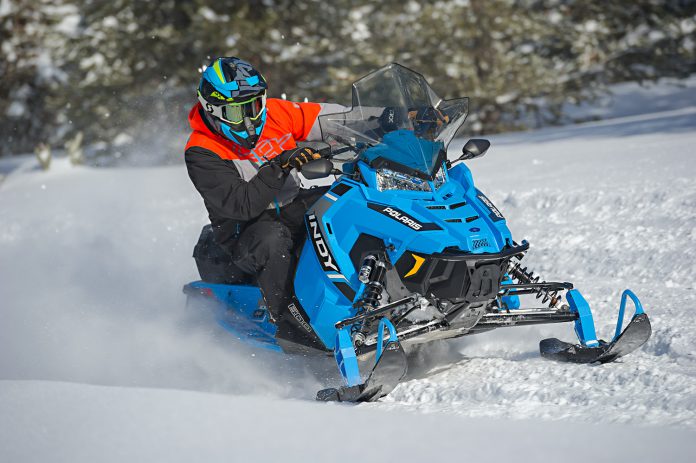It seems like all you ever read about is the technology that goes into the industry’s 800 and 850 max-performance 2-strokes.
The truth is, the 600 twins from Ski-Doo, Polaris and Arctic Cat are huge sellers and probably deliver the most consistent and reliable power in the industry.
We’re going to do a 3-part report on the most popular 600s and attempt to relate how their technology differs and why.
PART 1: POLARIS CLEANFIRE 600
We’ll start at the beginning with the Cleanfire 600 because it’s been around for the longest time (mid 2000’s) and has continued to perform admirably, consistently delivering power in the 125-hp range. Polaris set the bar high with this engine and drove both Cat and Ski-Doo to come up with technology that could deliver clean 600cc power at the same level.
The Polaris Cleanfire relies on Semi-Direct Injection (SDI) technology that means fuel is injected not directly into the engine’s crankcase like a conventional EFI 2-stroke, but rather, into the transfer port.
Regular 2-strokes
Using conventional 2-stroke theory, transfer ports are designed to “transfer” the fuel charge from the bottom end (crankcase) up to the top of the piston, into the combustion chamber so that on the ignition (power) stroke, the compressed charge is lit off by the spark plug. This ignition explosion forces the piston downward.
After this happens, the positive pressure in the crankcase caused by the descending piston drives the unburned fuel charge back up through the transfers at the same time the other side of the piston passes by the exhaust port leaving it open.
The whole system is designed to allow compression (compression stroke) every other rotation of the crankshaft as the exhaust port is closed off by the ascending piston.
Conventional 2-strokes allow a lot of unburned fuel to enter the exhaust and the EPA is not satisfied with this old-style technology, deeming it unclean. That’s where SDI comes in.
Cleanfire Differences
Cleanfire SDI injects the fuel charge into the transfer port while the pressure from the descending piston is driving crankcase air upwards to the top of the piston.
The precise location of the injector inside the transfer (also called a “boost” port) allows oxygen and gasoline to be mixed at a particularly lean ratio – thus the clean-burning nature of the SDI. It’s one of the reasons why Cleanfire engines have such a sharp exhaust note – almost like a race engine that has been jetted very lean.
Bottom end lubrication comes from “pinpoint” lubrication where minute quantities of 2-stroke injector oil are precision pumped via an electronically controlled oil pump onto critical bearing areas in the crankcase.
Residual oil is transferred to the top of the pistons as the engine cycles so there is adequate lube for the cylinder walls and piston rings. At the same time, the crankcase is getting sufficient lubrication and is kept cool without the need for liquid-cooled cases.
With Cleanfire running such lean mixtures, the use of a an electronic “knock sensor” is required to retard the timing as combustion chamber temperatures rise or bad fuel is detected. These sensors are so advanced and so fine-tuned, the timing changes are almost imperceptible to the rider.
The sequential nature of the fuel injectors ceases somewhere above 5000 RPM and the ECU tells the engine to inject fuel every stroke as the bulk of power is being demanded. It’s at these higher RPM levels that full lubrication is needed the most and the electronic oil pump compensates.








